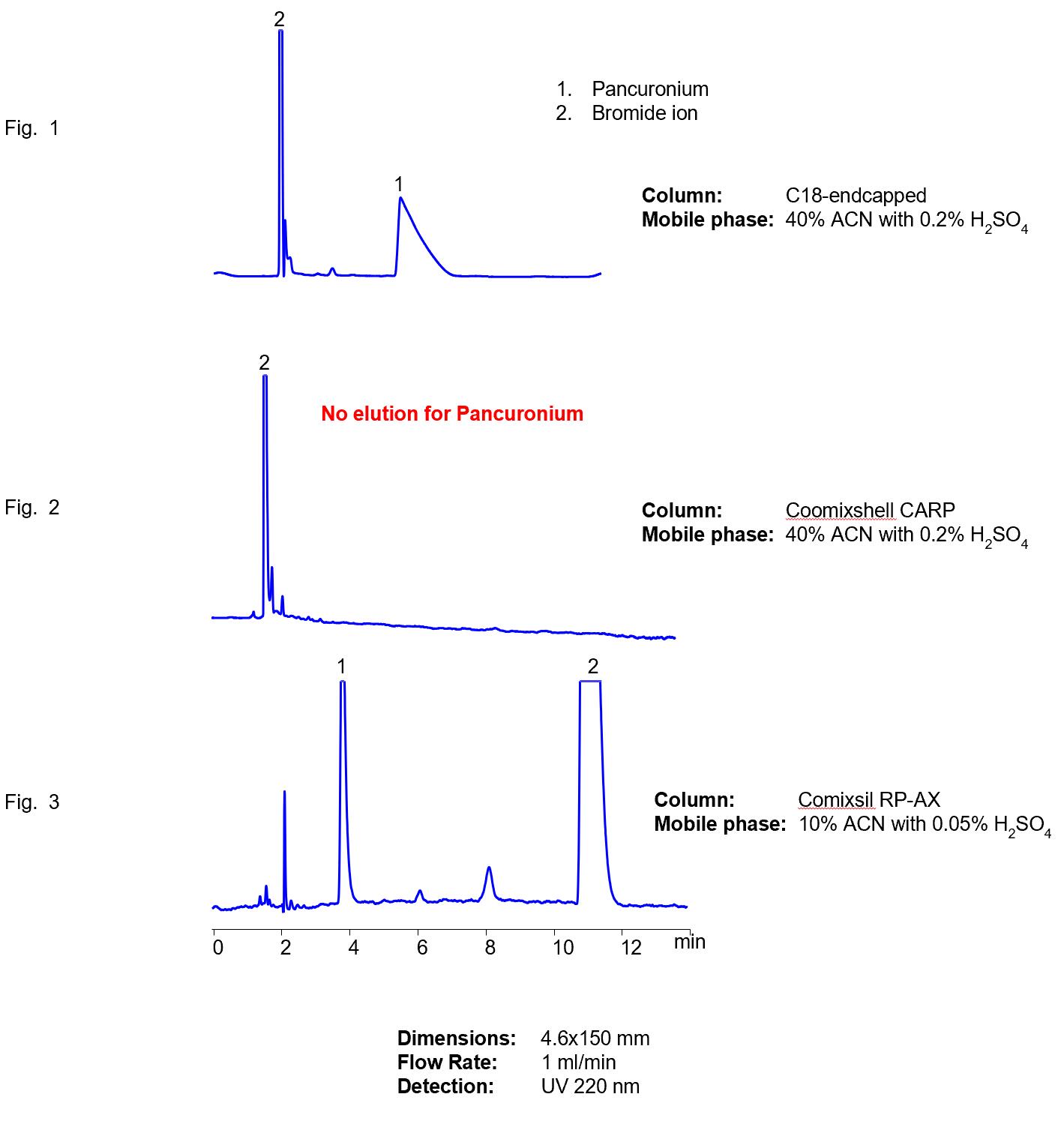HPLC Analysis of Pancuronium Bromide on Reverese-Phase and Mixed-Mode Columns
反相柱和混模柱上潘庫溴銨的HPLC分析

Mixed-mode chromatography usually adds secondary and tertiary interactions which help to achieve controlled retention, unique selectivity and allow to adjust retention time of various compounds by changing the amount of organic, buffer concentration, buffer pH and buffer nature(混合模式色譜法通常增添二重和三重相互作用,,有助于實現(xiàn)可控的保留,,獨特的選擇性,并通過改變有機(jī)溶劑的含量,緩沖濃度,,緩沖pH值和緩沖鹽的性質(zhì)來調(diào)整各種化合物的保留時間。 ). Presence of ionizable groups on the column also helps improve peak shape for various analytes, which sometimes is impossible to achieve with single mode columns.(色譜柱上存在可電離基團(tuán)也有助于改善各種分析物的峰形,,一些時候,,這在單一模式色譜柱上是不可能實現(xiàn)的) Pancuronium bromide is a hydrophobic compound with two strong basic groups. It shows a poor peak shape when RP columns are used(泮庫溴銨是一種具有兩個強(qiáng)堿性基團(tuán)的疏水化合物。當(dāng)采用RP柱時,,峰形較差,。). The poor peak shape is attributed to secondary interaction between analyte and silanols on the surface of RP columns (分析物與在RP柱表面的硅烷醇二次相互作用導(dǎo)致峰形較差) (Fig. 1). Sometimes you need to understand what secondary interaction to add to improve your chromatography(有時,你需要了解增加什么樣的二次相互作用來改善你的色譜方法). In case of pancuronium bromide, addition of cation-exchange mechanism did not work and target compound never eluted, (Fig. 2) even with very strong mobile phase from the column due to three strong interactions (reversed-phase and two cation-exchange interactions)(在泮庫溴銨的例子下,,添加陽離子交換機(jī)制不起作用,,目標(biāo)化合物也沒有洗脫(圖2)。即使柱內(nèi)流動相洗脫能力很強(qiáng),,存在三種強(qiáng)烈的相互作用(反相作用和兩種陽離子交換作用),,化合物也沒有得到保留.)Problem of elution and peak shape was addressed by changing cation-exchange interaction to cation-exclusion interaction. This allowed to retain and analyze both the drug and counterion with simple isocratic conditions (Fig. 3)(通過將陽離子交換相互作用轉(zhuǎn)變?yōu)殛栯x子排斥相互作用,解決了洗脫和峰形問題,。這樣就可以在簡單的等度條件下保留和分析藥物和反離子).
以上應(yīng)用所用到的產(chǎn)品可以咨詢菲羅門,,菲羅門提供色譜柱品牌、型號,、價格,。



